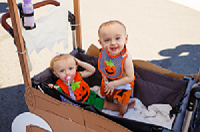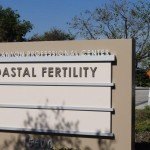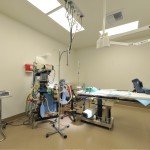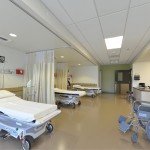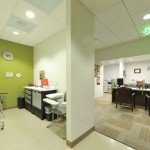About
Success
Treatment
Financial
Resources
Blog
Contact
Site Tools

What is Azoospermia – Types, Causes, Symptoms, and Treatments
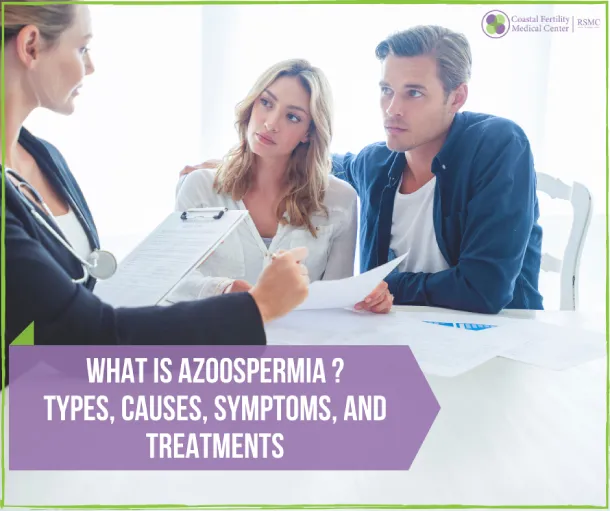
Azoospermia is a medical condition in which the man’s ejaculate (or semen) does not contain any sperm. It is a rare but severe form of male infertility, affecting just 1% of the whole population – and 10% of men with fertility issues. The best path of treatment for azoospermia is based on the actual cause of the condition and the female partner’s fertility.
One may think that men with azoospermia cannot have their own biological babies, but this is not necessarily the case. Through assisted reproductive technology like MESA and IUI, and with the help of surgery, many men with azoospermia have been able to have genetic children.
In the following piece, we will be discussing azoospermia in detail and the possible treatment options, as well as the ART methods that can help affected men have a genetic baby.
How Do Sperm Cells Work
A basic understanding of how sperm cells are made and released into the ejaculate is necessary to fully understand azoospermia.
Sperm Production
Sperm cells start their journey in the testes, which hang just outside the body in a sac of skin known as the scrotum. The testes, also called testicles, are placed outside the body due to the sensitivity of sperm to heat. Actually, the male body temperature is too high for sperm to survive in there.
The sperm cells are not just swimming about in the testicles. They are kept inside a system of small tubes called seminiferous tubules, where they develop.
It is important to note that sperm cells don’t begin in their tadpole-like form, but as small round cells. They only develop to the sperm cells we are familiar with after being exposed to fertility hormones, like luteinizing hormone (LH) and follicle-stimulating hormone (FSH), which are regulated and produced by the pituitary gland and the testes.
Sperm Maturation
Once the sperm cells reach a specific level of maturity in the tubules, they journey into the epididymis, a convoluted duct behind the testes, where they continue their development for many weeks.
After the sperm cells leave the epididymis, they move into the vas deferens and then travel in the seminal vesicle (the seminal gland). This is where most of the fluid in the semen is made. After the seminal vesicle, the sperm travels to the prostate gland, where a milky fluid (prostate fluid) is added to the whole mix.
The sperm cells then move into the prostate gland, which is their final stop before they travel into the urethra during ejaculation. The urethra runs from the bladder to the prostate gland and finally to the tip of the penis.
Sitting just beneath the prostate gland are two pea-sized glands called the Cowper’s or bulbourethral glands. Although sperm cells do not pass through these glands directly, they release an alkaline fluid that helps neutralize the acidity of the urine remaining in the urethra before ejaculation.
You may be thinking, what prevents urine from passing through the urethra during ejaculation?
The muscle surrounding the neck of the bladder constricts when a man is aroused, stopping the urine from leaving the bladder during intercourse.
Types of Azoospermia
There are different types of azoospermia, and each having its own likely causes or associated medical conditions. However, 10 to 15% of cases of no or very low sperm count can be linked to genetic conditions that impact the Y chromosome.
Pre-testicular Azoospermia
This is a nonobstructive type of azoospermia that may be caused by some genetic disorders, i.e., Kallmann syndrome that impacts the ability of the body to produce the gonadotropin-releasing hormone, affecting sperm production.
Brain issues – in particular, damage to the pituitary gland or hypothalamus – can also lead to this condition. Pre-testicular azoospermia may also result from the use of certain medications or from undergoing radiation therapy for cancer.
Testicular Azoospermia
This is also a non-obstructive type of azoospermia. It can occur due to:
- Absence of both testes (anorchia)
- Testes that fail to descend from the abdomen (cryptorchidism)
- Testes that don’t produce any sperm (Sertoli cell-only syndrome)
- Testes that don’t produce mature sperm (spermatogenic arrest)
Another possible cause is Klinefelter syndrome, which is when a boy is born with chromosomes XXY instead of the usual XY chromosomes.
Other causes of testicular azoospermia are:
- Diabetes
- Radiation
- Reactions to some medications
- Tumors
- Prior surgery
- Having mumps in adolescence
- Varicocele (an enlargement of the veins within the bag of skin that holds the testicles)
Post-testicular azoospermia
This obstructive type of azoospermia happens in approximately 40% of all cases. Obstruction can occur due to a missing connection, i.e., in vas deferens or epididymis that stores and carries sperm.
Post-testicular azoospermia can also be due to some genetic conditions. For instance, congenital bilateral absence of the vas deferens (CBAVD) is an inherited condition in which the vas deferens ducts that move sperm from the testes are absent. It has been linked to carrying or having genes for cystic fibrosis.
Other possible causes of obstructive azoospermia are cysts, injury, vasectomy, or infection.
Symptoms
Azoospermia on its own does not have any particular symptoms.
Couples may suffer from infertility if the male partner has no sperm count. A couple is believed to be infertile if they fail to become pregnant after a year of having sex without protection. In most cases, infertility is the only thing that shows them that something is wrong.
However, certain causes of azoospermia may result in several symptoms and signs. Here are symptoms or signs that can show you are likely to have azoospermia:
- Pelvic pain
- Painful urination
- Low ejaculate volume or “dry” orgasm (little or no semen)
- Swollen testes
- Smaller than average penis
- Erection or ejaculation issue
- Muscle loss
- Small or undescended testicles
- Abnormal or delayed puberty
- Low libido
- Enlarged breasts
- Cloudy urine after sex
- Reduced male hair growth.
Bear in mind that it’s possible for someone not to experience any of these symptoms and yet have azoospermia.
Causes of Obstructive Azoospermia
Possible causes of this type of azoospermia include:
- A congenital abnormality
- Inflammation or infection of the male reproductive tract
- Prior injury or trauma
- Retrograde ejaculation (although, technically, there is no obstruction involved in this case)
Congenital Source
Certain genetic conditions or abnormalities can result in obstructive azoospermia. While some men are born with an obstructed epididymis or ejaculatory duct, others may not have the vas deferens on either or both sides of their reproductive tract. However, the actual causes of these anomalies remain unknown.
Men who are born without a vas-deferens on both sides of their reproductive tract are said to suffer from congenital bilateral absence of the vas-deferens (CBAVD). This condition has been linked with the gene for cystic fibrosis (CFTR).
Studies have shown that 3 in 4 men with CBAVD also have mutations in the cystic fibrosis gene.
Although most men with cystic fibrosis will not have the vas deferens, not all men without the vas deferens suffer from cystic fibrosis. Men who only have genetic mutations on the CFTR gene but not the actual disease may experience mild digestive or breathing issues.
Others will just be a carrier for the cystic fibrosis gene, which means that they can transfer cystic fibrosis to their baby if the female partner, too, carries the gene. Men who don’t have vas deferens on both sides, have mutations on the cystic fibrosis gene but do not have the full-blown disease are said to suffer from atypical cystic fibrosis.
Due to the risk of transferring this life-threatening condition, it is recommended that both couples undergo genetic testing if the male partner’s azoospermia is due to a missing vas deferens. Cystic fibrosis is an autosomal recessive disorder, which means that a child cannot inherit the condition unless both Parents are carriers.
Inflammation or Infection of the Male Reproductive Tract
Obstruction of the ejaculatory duct or epididymis can be due to inflammation or infection. Inflammation of the epididymis is called epididymitis.
These infections can be caused by an untreated STI (sexually transmitted infection). It is important to note that the obstruction can still remain, even after the infection has been treated. This may be due to the formation of scar tissue during the active inflammation stage of the infection. Although the antibiotics will help clear the infection, it is not going to fix the scar.
So, let your physician know if you have a prior history of sexually transmitted infection, even if it occurred a long time ago.
Non-sexually transmitted infections may also cause inflammation, blockage, and scar tissue. For instance, childhood mumps can lead to viral orchitis – an inflammation of the testicles. This infection can cause permanent scarring, which may cause male infertility in later life due to azoospermia.
Previous Trauma or Surgical Causes
Prior trauma to the male reproductive tract can lead to obstruction, damage, or scarring of the epididymis, ejaculatory duct, or vas deferens.
At times, surgery on the male reproductive tract can cause scarring or injury. For instance, a herniorrhaphy (surgery to repair an inguinal hernia) may cause injury to the vas deferens or testes.
Another possible cause of azoospermia is vasectomy – a permanent form of birth control, where the tubes that carry sperm from the testes (vas deferens) are intentionally blocked or cut. Although this is exactly the aim of vasectomy, some men may want their vasectomy reversed later in the future.
Retrograde Ejaculation
Retrograde ejaculation occurs when sperm flows back into the bladder instead of passing through the urethra during ejaculation. This may result in low semen volume as well as low or no sperm count, based on the severity of the condition.
Although technically there is no obstruction, in this case, it is still usually classified as a type of “obstructive” azoospermia. Fortunately, this is easier to resolve compared to other causes of obstructive azoospermia.
Causes of Nonobstructive Azoospermia
Possible causes of nonobstructive azoospermia include:
- A genetic or chromosomal disorder
- A varicocele
- Hormonal imbalances
- Damage to the testicles due to chemotherapy, radiation, or exposure to toxins
- Adverse effects of medications or hormonal supplements
Genetic and Chromosomal Anomalies
1 in 4 cases of nonobstructive azoospermia can be ascribed to a chromosomal or genetic issue. However, the particular gene involved is not always known, and there are many things we still don’t know about the genetic causes of infertility.
Chromosomal or genetic causes of nonobstructive azoospermia include Kallmann syndrome, Klinefelter syndrome, and Y chromosomal microdeletions.
As you probably know, females typically have two X chromosomes in their cells, while males have X and Y chromosomes.
However, in the case of Y-chromosomal microdeletions (YCM), the Y chromosome is lacking certain genes. This may cause low sperm counts and consequently male infertility. A lot of men with this condition don’t experience any other symptoms, although some might have small or undescended testicles.
Klinefelter syndrome is when a boy is born with XXY chromosomes instead of the typical XY chromosomes. Even though some men with this syndrome will experience physical and cognitive issues that will lead to the detection of the condition during adolescence, others have slight or no symptoms and are undiagnosed until they are dealing with infertility.
Kallmann syndrome is a congenital condition linked to the ANOS1 gene, which is found on the X-chromosomes. People with this syndrome may not experience normal puberty, have a lowered sense of smell, and usually have fertility issues. Kallmann syndrome can cause hypogonadotropic hypogonadism, which we will discuss further below.
Radiation, Chemotherapy, or Toxin Exposure
Prolonged exposure to toxic chemicals can cause temporary or permanent azoospermia. This condition may develop if radiation was applied directly to the male reproductive organ during cancer treatment.
Chemotherapy – which is used in cancer treatment – usually results in azoospermia, but it is uncertain whether or not the condition will continue post-treatment. In some cases, the patient will quickly regain fertility, and in others, it will take years for sperm production to return. Sperm production may not return until 10 years after treatment and may never do.
This is why it is important to speak to your doctor about sperm cryopreservation before commencing cancer treatment.
Exposure to toxic chemicals at work may also result in male infertility and nonobstructive azoospermia. Similarly, exposure to heavy metals or some pesticides can cause infertility in men.
Hormonal Imbalance
The pituitary gland, testes, and hypothalamus combine to create the chemicals and hormonal signals necessary for sperm production. Hence, abnormalities in the production, levels, and interactions of hormones can cause male infertility, including non-obstructive azoospermia.
A lot of things can cause hormone imbalance, i.e., genetic conditions, acquired hormonal problems, lifestyle-based triggers. And at times, the actual cause is unknown.
Hypogonadotropic hypogonadism is a condition that occurs when there’s an issue with the hypothalamus or pituitary gland. It may be present at birth or occur later in life. The likely causes of hypogonadotropic hypogonadism are excessive exercise, genetic conditions, drug abuse or side effects of medications, or exposure to radiation.
Primary testicular failure occurs when a hormone imbalance is due to issues with the testes, and this can result in low production of testosterone and poor sperm development.
Secondary or central testicular failure occurs due to hormone breakdown in the hypothalamus or pituitary gland, while the testes may be working normally.
Medication Side Effects
Certain medications can also lead to azoospermia.
Testosterone supplementation is one of the most common causes of azoospermia due to medication side effects. The use of anabolic steroids can lead to azoospermia, as can drugs used in chemotherapy.
While some medications that cause azoospermia will produce this effect only for the short term, others may have effects that last for a very long time.
Here are some other medications that can result in nonobstructive azoospermia:
- Cyclophosphamide (cancer drug)
- Chlorambucil (cancer drug)
- Colchicine (used for treating gout)
- Vinblastine sulfate (used to treat cancer)
- Sirolimus (used to prevent organ rejection after organ transplant)
- Everolimus (cancer medication and also used to prevent organ rejection in patients who had a transplant)
- Procarbazine hydrochloride (used to treat Hodgkin’s disease)
Varicocele
A varicocele is an enlargement of the vein in the testes or scrotum. The swelling of this vein can make blood accumulate in the area, which raises the temperature of the testes and may also lead to inflammation, testicle shrinkage, and discomfort.
Varicoceles usually result in reduced sperm counts. However, just 4 to 13% of men with a varicocele will experience extremely low sperm count or azoospermia.
Diagnosis and Testing
The only way to know whether your sperm count is zero or abnormal is through semen analysis. If the first test shows that you have no sperm count, your physician will ask you to undergo the test again some months later.
Azoospermia is confirmed after two different semen analyses are done and there is no measurable sperm in the samples.
Once azoospermia is detected, the next thing is to figure out the root cause of the condition. Your treatment plan will depend on the suspected cause of your azoospermia.
Additional testing may include:
- Physical examination of the testes
- Blood work to determine the levels of testosterone and FSH, and probably, estrogen or prolactin levels
- Testicular biopsy (in certain cases)
- Karyotype testing and genetic testing for some genetic diseases
- Transrectal ultrasound to check for obstruction or abnormalities in the male reproductive tract
- Getting a comprehensive medical history (which details any severe childhood illness, such as mumps or prior sexually transmitted infections (STI).
There is no need to conduct all the tests above. More invasive testing (i.e., testicular biopsy) will not be necessary if other tests have already detected the possible cause of the condition.
It is vital that the female partner undergoes a complete fertility evaluation, as this can help determine the best treatment path for both of them. General testing and counseling may also be advised for the couple.
Treatment
Fertility treatment will be based on the particular type of azoospermia and the exact cause of the condition. The fertility potential of the female partner will also influence the choices of treatment.
Treatment of Any Existing Infections
If one or both partners have an active infection, this needs to be treated before beginning any other treatment.
Although a lot of men will be experiencing symptoms of an infection, such as painful urination, some infected men will not have any symptoms at all. However, even without any clear symptoms, the infection may be impacting their fertility and causing severe damage to their reproductive tract.
Surgical Repair
Sometimes, microsurgical treatment can be performed to fix blockages and severed connections in the case of obstructive azoospermia. Surgery may also be done to treat or remove an enlarged vein (varicocele) or treat retrograde ejaculation.
Men with obstructive azoospermia may be able to conceive naturally if their condition can be corrected through surgery. However, it’s important to know that surgical treatments will not resolve the issue overnight. A semen analysis will be done within 3 to 6 months after surgery.
Natural conception is also possible if the male partner has normal sperm levels and the female partner has no fertility problem. However, there are other options that can be explored if the sperm levels remain abnormal post-surgery.
Medication or Hormonal Support
Azoospermia can sometimes be treated with medication. For instance, retrograde ejaculation is often treated with drugs, which can make natural conception possible.
Examples of hormones or hormonal medications used for treating male infertility are Letrozole, Clomid, hCG injections, or FSH injections.
Hormone treatment can be performed to induce sperm development in men with azoospermia. In many cases, the hormone support will return sperm cells into the ejaculate, while in other cases, it will only enable enough sperm development so that viable sperm cells can be collected from the testes directly through a testicular biopsy.
Extraction of Sperm from Post-ejaculate Urine
If retrograde ejaculation cannot be treated, the doctor may extract sperm from the first urine after ejaculation. He or she can then proceed with IVF or intrauterine insemination (IUI) based on the quantity of sperm present and the female partner’s fertility.
Lifestyle Change or Discontinuation of Drugs
If you are taking any medication associated with azoospermia, the first thing to do is to stop using the drug or wait till treatment has been completed.
For instance, chemotherapy can lead to azoospermia, but it may take months or even years for sperm to return after cancer treatment. Also, if testosterone supplements are responsible for your azoospermia, you may be advised to stop using testosterone.
Note: do not discontinue any drugs or supplements without speaking to your doctor first.
If the doctor suspects that your azoospermia is due to exposure to toxins or excessive heat at work, you may be advised to alleviate the issue. In some cases, chronic exposure to toxic chemicals can lead to permanent damage. In others, sperm development may resume or at least increase, raising the chances of conception in conjunction with other fertility treatments.
Testicular Sperm Extraction with IVF and ICSI
Testicular sperm extraction (TESE) can be done to collect sperm cells directly from the testes. The procedure usually takes place under mild sedation or anesthesia. The physician will make a tiny cut in the scrotum and remove tissues from the testes. This tissue will then be checked for sperm cells and frozen if it is not to be used immediately.
TESE may be considered when obstructive azoospermia is preventing sperm cells from being included in the semen. It can also be performed in cases of nonobstructive azoospermia to check for some viable sperm cells that the body may be producing but are insufficient to get into the ejaculate.
Note that sperm cells collected through TESE can only be used in ICSI and IVF. ICSI (intracytoplasmic sperm injection) is a medical procedure in which one sperm cell is injected directly into a female egg. If the procedure succeeds, fertilization can occur, and the embryos produced are then inserted in the woman’s womb.
PGD and Genetic Counseling
Genetic counseling is usually advised for couples if the azoospermia is due to a genetic condition. It may also be recommended if ICSI-IVF is being carried out.
Some genetic conditions are only transferable if both biological parents are carriers. This is the reason why both male and female partners should get tested.
If you find out that you’re likely to transfer an inheritable disease, the best thing to do is include pre-implantation genetic diagnosis (PGD) in your IVF treatment. PGD enables doctors to check embryos for certain genetic conditions before they are transferred. Then, only healthier embryos will be placed in the mother’s womb.
Sperm Donor with IUI or IVF
Men with azoospermia may also want to use a sperm donor in order to have a baby. A sperm donor can be considered when sperm extraction is impossible.
Some men decide to use a sperm donor because they want to avoid the risk of transferring infertility to their male child.
When a couple is using a sperm donor, either IUI (artificial insemination) or IVF will be performed. This will depend on the fertility of the female partner.
Embryo Donor
Another option for men with azoospermia is using an embryo donor. The embryo will be placed in their female partner’s or Surrogate’s womb to achieve a pregnancy. However, if you decide to use a donated embryo, none of the Intended Parents will be biologically related to the baby.
Alternative Options
Other options for men with no sperm counts include adoption or foster parenting.
How can azoospermia be prevented?
Actually, there is no particular way you can avoid the genetic conditions that lead to azoospermia. However, if your azoospermia is not due to a genetic problem, you can lower your risk of having the condition by doing the following:
- Staying away from activities that can injure the male reproductive organs
- Not exposing yourself to radiation
- Avoiding prolonged exposure of your testicles to heat
- Understanding the risks and benefits of drugs that can affect sperm production
Coping with Azoospermia
Being diagnosed with azoospermia can be emotionally worrying. It can even more so when this diagnosis comes with other unpleasant news, such as the diagnosis of an inheritable disease or the risk of transferring a genetic condition to your baby.
Hence, it is recommended that couples dealing with azoospermia go for counseling with a therapist that’s well versed in reproductive issues. A therapist can help you handle the diagnosis and help figure the right family-building option to consider in the future.
If you choose to use donor sperm or embryos, your fertility center will probably ask you to speak with a counselor before proceeding.
Azoospermia may also increase your risks of overall health issues, including a higher risk of death.
Men with zero sperm counts may be too ashamed of their condition and hence may not inform their doctor or healthcare provider about their diagnosis. But due to the higher risk of general health problems, it is crucial to be honest with your physician and tell them.
Final Word
Azoospermia is one of the leading causes of infertility in men. But the good news is, there are several treatment options for the condition. While some men with azoospermia may be able to have a biologically related baby, others may have to use a sperm donor, consider adoption, or foster parenting.
Getting through the diagnosis and the family-building options can be hard. That is why you need to get support from a trained counselor, your friends, and your family. Coastal Fertility has always remained an ally for men struggling with infertility and offers top-of-the-line treatment options. Schedule a consultation today to learn more.
Schedule a Consultation
Related Post
-
What is Azoospermia – Types, Causes, Symptoms, and Treatments
-
15 Things Doctors Want Women in Their 30s to Know About Their Fertility
-
Ovarian Hyperstimulation Syndrome (OHSS) – Causes, Risks, and Treatments
-
This IVF Pregnancy Success Video Is Going Viral On TikTok, And It’s The Most Adorable Announcement
-
End your week with these happy and heartwarming stories and videos
-
Fertility clinic shares IVF pregnancy success with parents-to-be in adorable video
Halloween 2019
Each year, Coastal Fertility Medical Center’s staff hosts a fun get together for our former patients and their families. View more photos from our 28th annual Miracle Babies Halloween event!Popular Searches
- Orange County Fertility Clinic
- Irvine, California Fertility Center
- Coastal Fertility Medical Center
- Free Fertility Seminar, Irvine CA
- In Vitro Fertilization and ICSI
- Best Orange County Infertility Doctor
- Southern California Fertility Specialist
- PGD, PGS Orange County
- Egg Donation and Surrogacy
Address
Coastal Fertility Medical Center15500 Sand Canyon Avenue
Suite 100
Irvine, CA 92618
©2024 | Sitemap | HIPAA/Privacy | Disclaimer and Privacy Policy
News from our Top Doctors

Our fertility clinic focuses on helping you build your family regardless of your sexual orientation or the gender you choose to identify with. We are even taking further steps to make LGTB people feel more welcome at our fertility clinic. Each of our patient-facing staff goes through LGTB training to let family-building clinicians provide necessary support and make you feel highly welcome.

Coastal Fertility Medical Center offers one of the most advanced fertility treatments and is completely transparent regarding the costs of procedures and any other expenses that you may have to pay before commencing your treatment. This differentiates us from some fertility clinics that reduce prices before the signing of the contract but charge you extra later on. We make sure our patients are well aware of any possible extra pricing that may occur over the course of their treatment.

The infertility industry is currently segmented, with each service or treatment being handled by a different provider. Our all-inclusive model simplifies an otherwise complex and difficult process. We are here to revolutionize the infertility industry by offering a one-stop-service model to assist our patients through infertility challenges while reducing physical, emotional, and financial risks.

Our globally respected team of specialists are helping improve IVF technologies to enter into a generation of better outcomes for infertility. Although you’ll have a doctor guiding you, you are also going to benefit from the experience and insights of other doctors during case review collaboration meetings, which take place every week. So, you won’t just rely on the expertise of a specialist but benefit from the knowledge of many reputed fertility experts.

Our team specializes in difficult cases and help patients who may have been considered “hopeless” at other fertility clinics. Thanks to our personalized solutions, expertise, and internal collaboration, weare able to maximize pregnancy success rates that are well above the industry average, even in difficult infertility cases.

We know that every situation is different and that everyone requires different treatments. Unlike facilities that take “a one-size-fits-all” approach for all cases, our fertility specialists use more than 40 customized protocols to raise the chances of success. The customized approach even extends to our fertility laboratory. Our on-site lab director and his highly-experienced team nurture every embryo and egg to increase the odds of success of each cycle.

Coastal Fertility Medical Center offers one of the most advanced fertility treatments and is completely transparent regarding the costs of procedures and any other expenses that you may have to pay before commencing your treatment. This differentiates us from some fertility clinics that reduce prices before the signing of the contract but charge you extra later on. We make sure our patients are well aware of any possible extra pricing that may occur over the course of their treatment.
Thanks for Joining!
We will be sending new updates soon.
You’re all set!
Your new patient forms have been submitted and received. We look forward to seeing you at your appointment.
Send us a message, we’ll be happy to answer any questions!
Please complete the form so we can best serve and help you with your journey towards parenthood.
On Demand Seminar Registration
Following the Preimplantation Genetic Screening process, which helps ensure there are normal chromosome numbers and detects possible genetic disorders, the most healthy embryo(s) are selected to be implanted into your or your chosen surrogate’s womb. 2 weeks after the transfer of the embryo, your physician will conduct a final blood test to determine the level of hCG (human chorionic gonadotropin) in your body. Increased hCG levels usually indicate a positive pregnancy test.

For fertilization to take place, the collected egg and sperm are combined in a petri dish and cultured in an embryo incubator. This dish is closely watched to check whether any of the eggs have been fertilized. Once the egg is fertilized, it is referred to as an embryo or a blastocyst on the 5th day of development. Our in-house embryologist carefully nurtures every embryo to the right time, even if it means working outside the standard business operating hours. For instance: If an oocyte is not mature, our laboratory will wait for it to mature and then ICSI it at the right time.
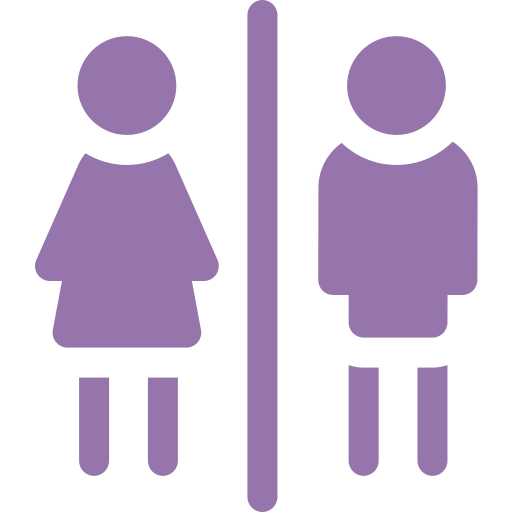
The egg retrieval is a slightly invasive medical procedure that takes about 20 to 30 minutes. You will be given an anesthetic to make you sleep for the duration of the procedure. Using ultrasound technology, your doctor will harvest your eggs transvaginally with a small, hollow needle connected to an ultrasound probe. Once your eggs are collected, your partner’s semen or donor sperm you have pre-selected is used for fertilization. The sperm are washed and prepared, and the top-quality sperm extracted is used to fertilize the eggs.

Your doctor will create a customized medication schedule that contains information about the fertility medications and hormone injections you have to take. Medication and injections are taken to encourage your ovaries to mature a large number of eggs for fertilization. Since women don’t respond to fertility drugs and hormones the same way, personalized protocols are crucial to the IVF cycle success. At Coastal Fertility, we will monitor you closely, letting you understand the changes occurring in your body and keeping track of how your egg follicles are growing.

On-site consultations typicallyinclude a standard fertility evaluation, consisting of a physical examination, complementary follicular ultrasound, and testing to enable your doctor to know your present fertility status and draw up a treatment plan.

This consultation includes a detailed medical evaluation with a doctor. You and your physician will review your health records and have enough time to talk about your goals and get answers to your questions. We recommend that you jot down all your questions before the visit to allow you to make the best use of the time spent with your doctor.

Your Reproductive Endocrinologist will take all factors into consideration and create a comprehensive plan of care, otherwise known as the treatment plan. This plan will include treatment recommendations from the physician and enable your financial coordinator to make a precise quotation once you meet.

Our globally respected team of specialists are helping improve IVF technologies to enter into a generation of better outcomes for infertility. Although you’ll have a doctor guiding you, you are also going to benefit from the experience and insights of other doctors during case review collaboration meetings, which take place every week. So, you won’t just rely on the expertise of a specialist but benefit from the knowledge of many reputed fertility experts.

The infertility industry is currently segmented, with each service or treatment being handled by a different provider. Our all-inclusive model simplifies an otherwise complex and difficult process. We are here to revolutionize the infertility industry by offering a one-stop-service model to assist our patients through infertility challenges while reducing physical, emotional, and financial risks.

Our fertility clinic focuses on helping you build your family regardless of your sexual orientation or the gender you choose to identify with. We are even taking further steps to make LGTB people feel more welcome at our fertility clinic. Each of our patient-facing staff goes through LGTB training to let family-building clinicians provide necessary support and make you feel highly welcome.

We know that every situation is different and that everyone requires different treatments. Unlike facilities that take “a one-size-fits-all” approach for all cases, our fertility specialists use more than 40 customized protocols to raise the chances of success. The customized approach even extends to our fertility laboratory. Our on-site lab director and his highly-experienced team nurture every embryo and egg to increase the odds of success of each cycle.

Our team specializes in difficult cases and help patients who may have been considered “hopeless” at other fertility clinics. Thanks to our personalized solutions, expertise, and internal collaboration, weare able to maximize pregnancy success rates that are well above the industry average, even in difficult infertility cases.

Upon your arrival, you will check in with a Patient Care Coordinator. We will obtain your insurance information for benefits verification, a copy of your identification and take a picture for your electronic medical chart
Welcome to Coastal Fertility Family
Coastal Fertility is the leading provider of fertility solutions located in Orange County. Join us to get free updates on fertility news, treatments, infertility solutions and more.
Welcome to Coastal Fertility Family
Coastal Fertility is the leading provider of fertility solutions located in Orange County. Join us to get free updates on fertility news, treatments, infertility solutions and more.



